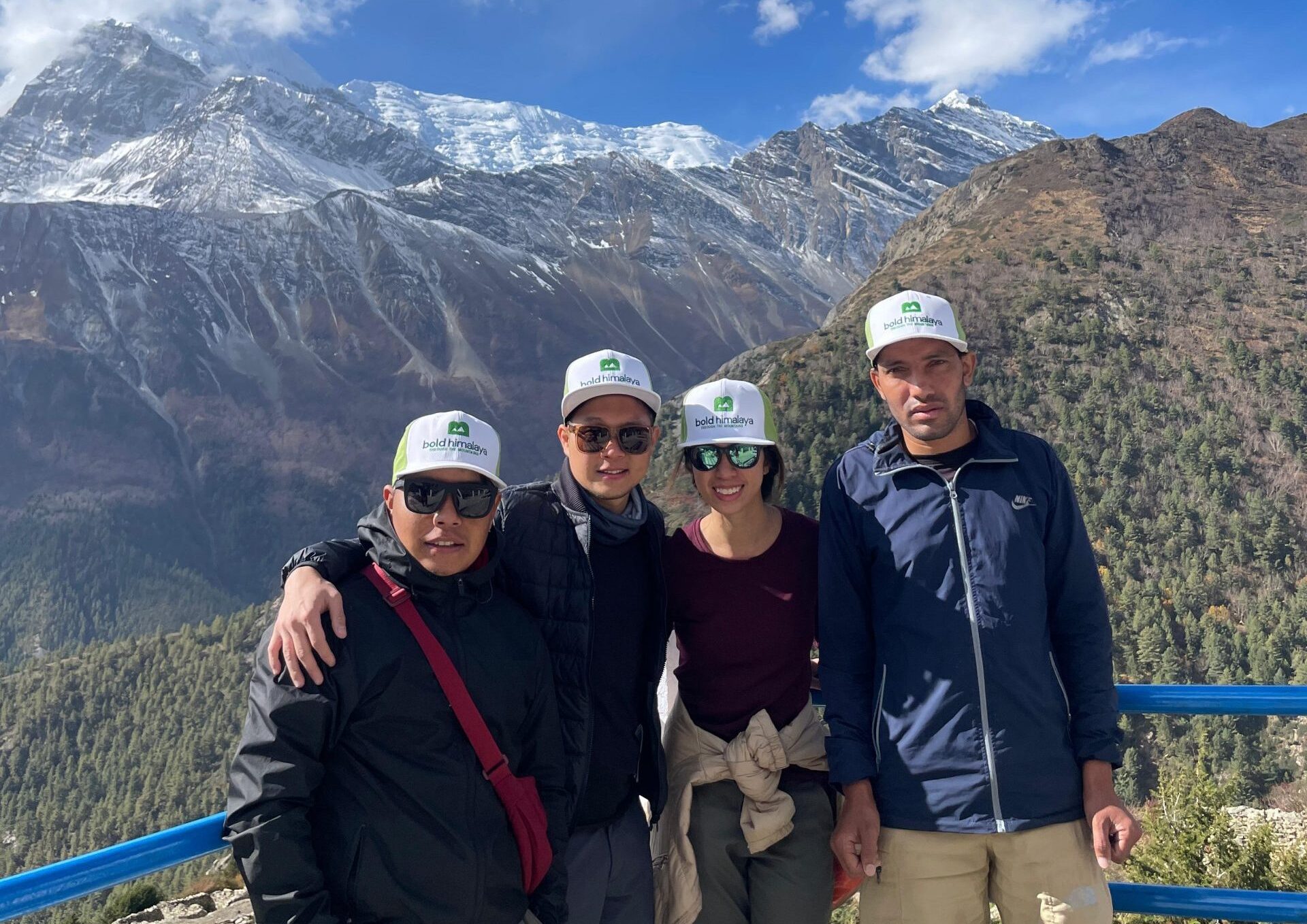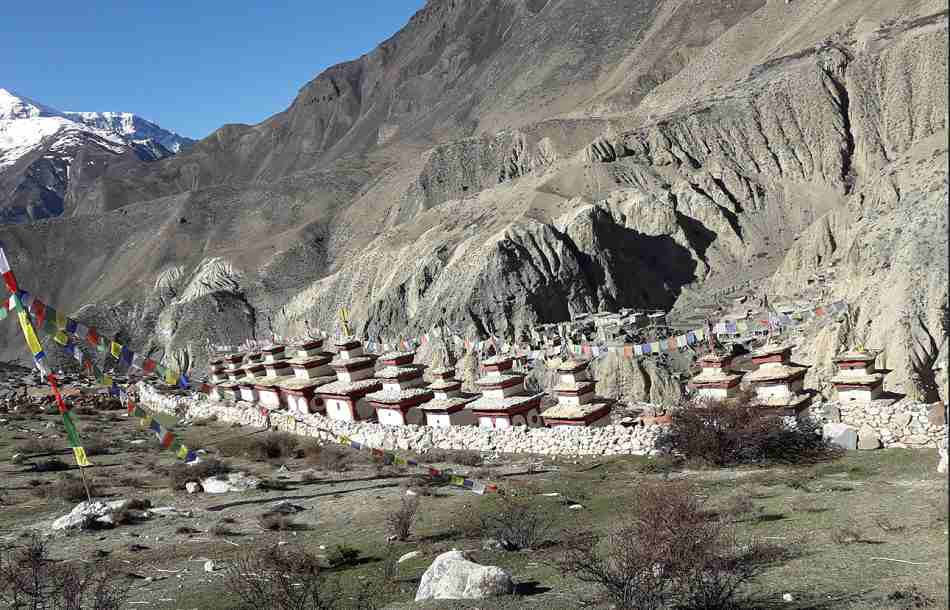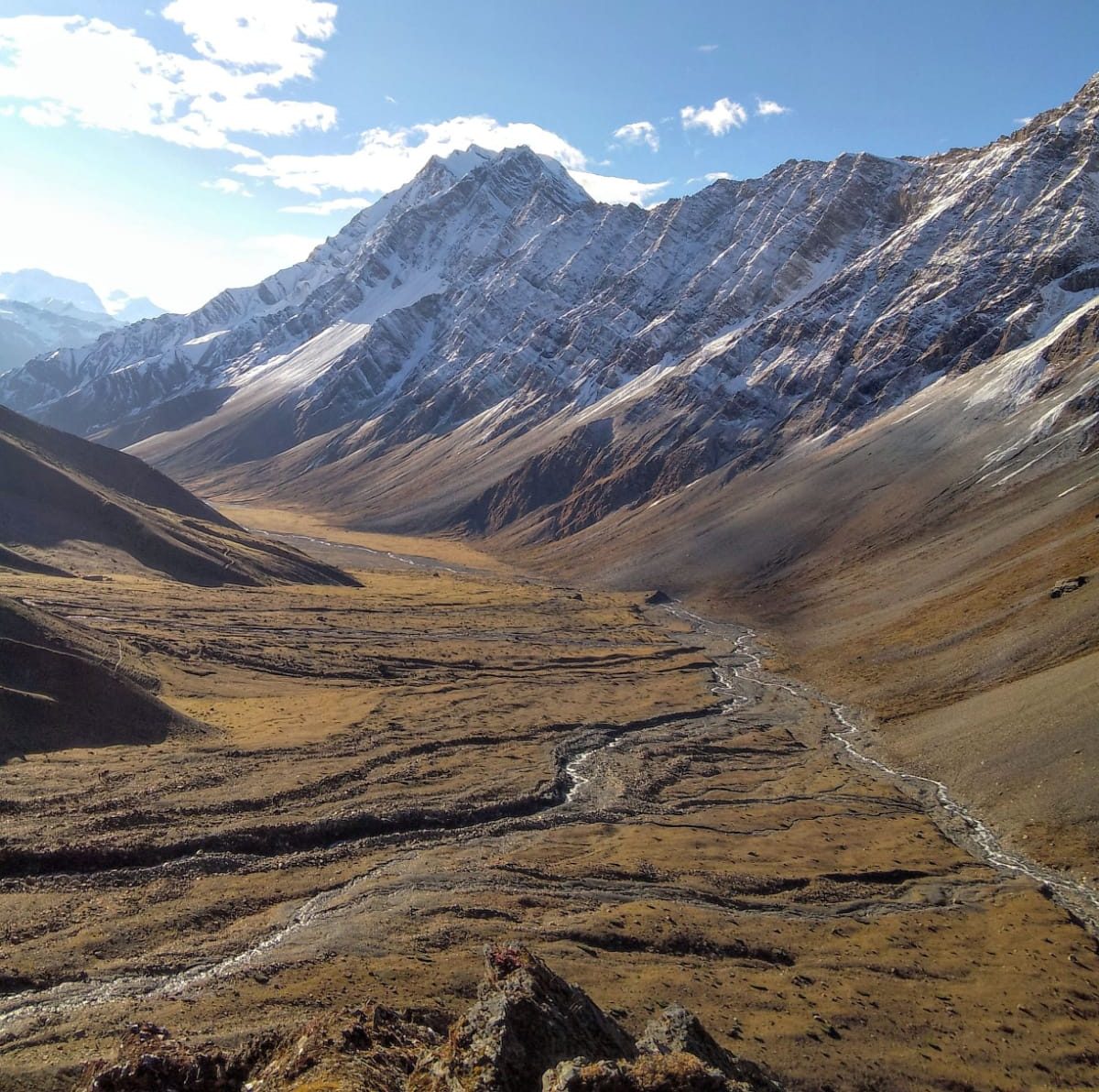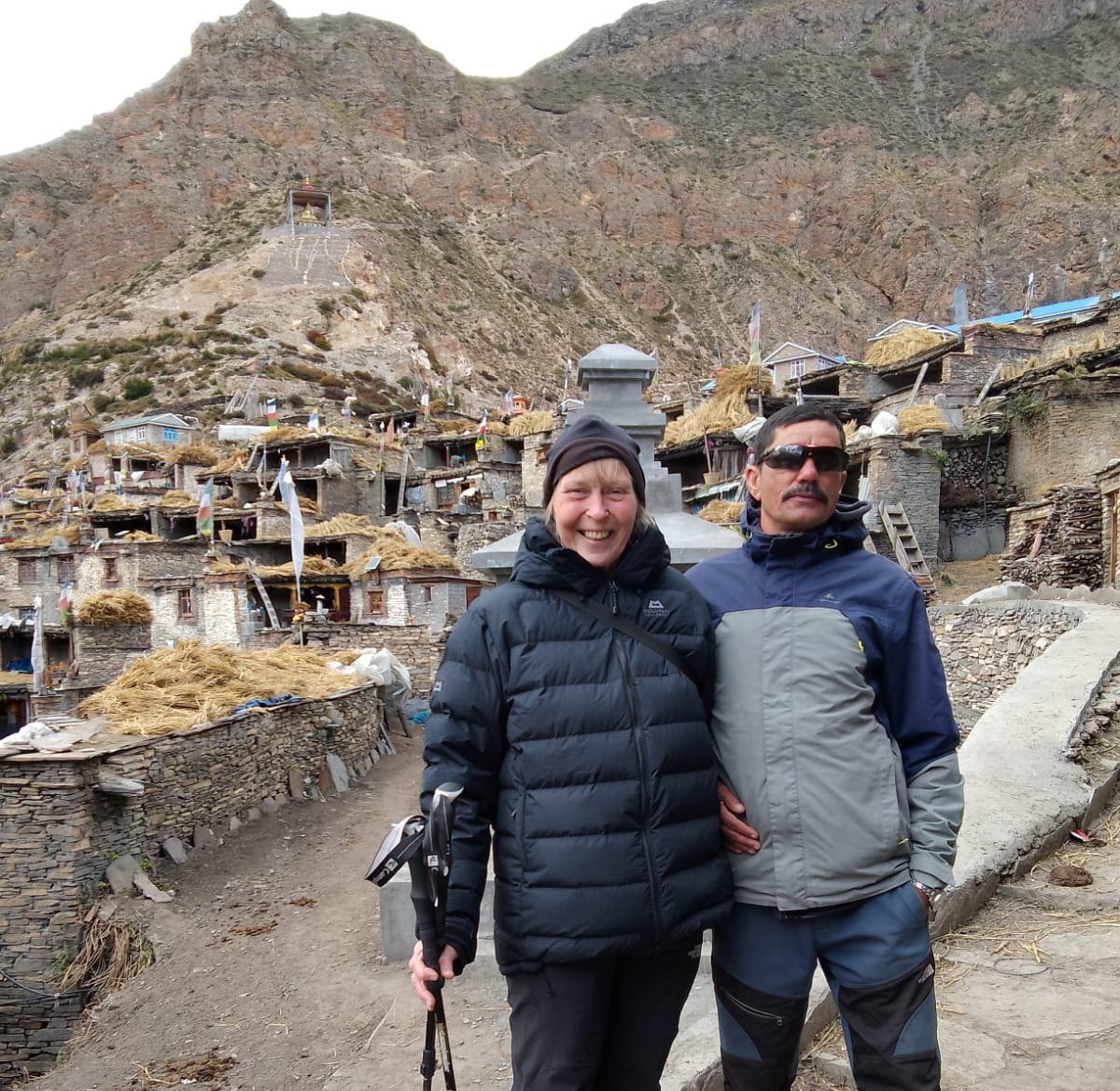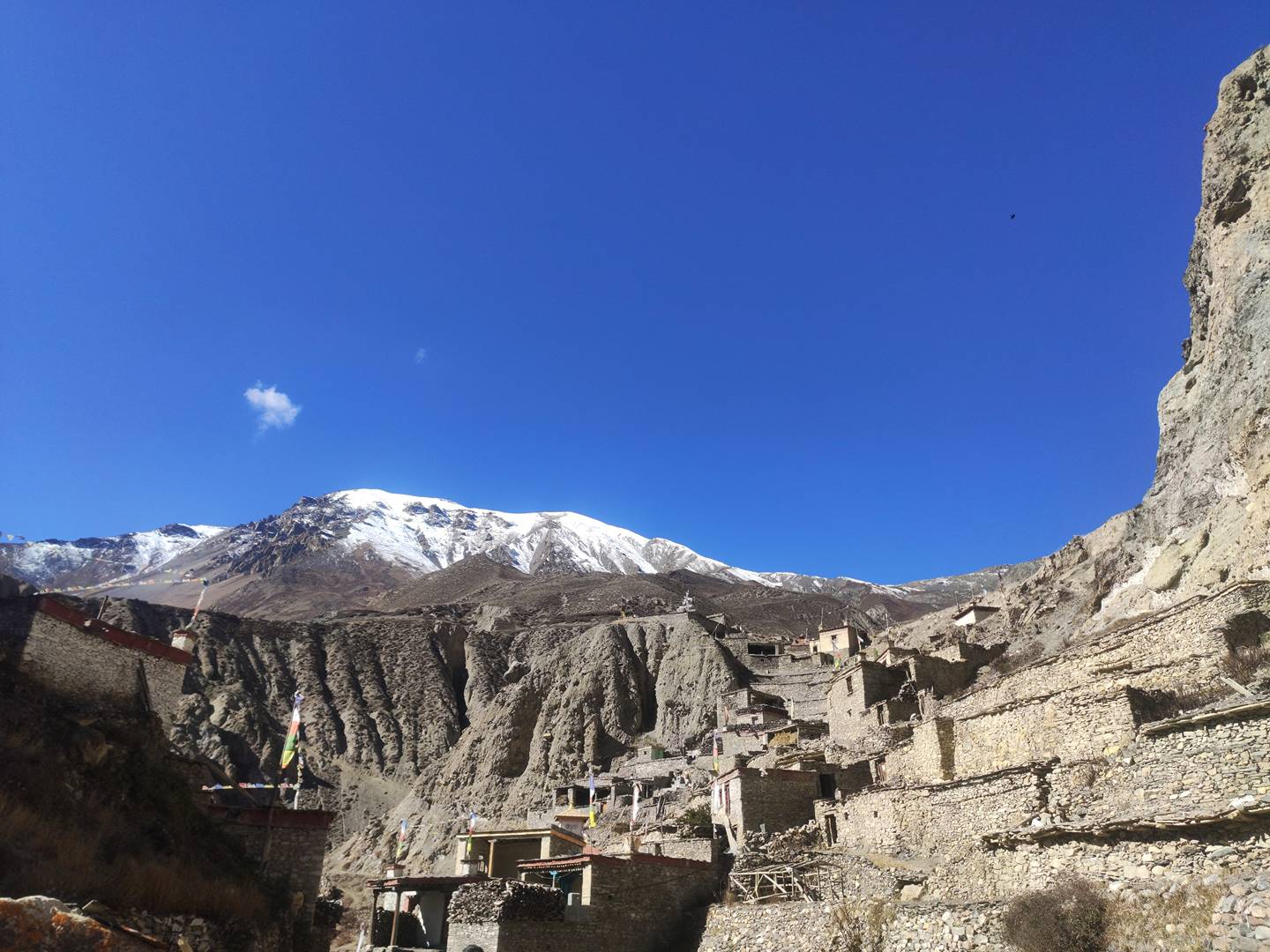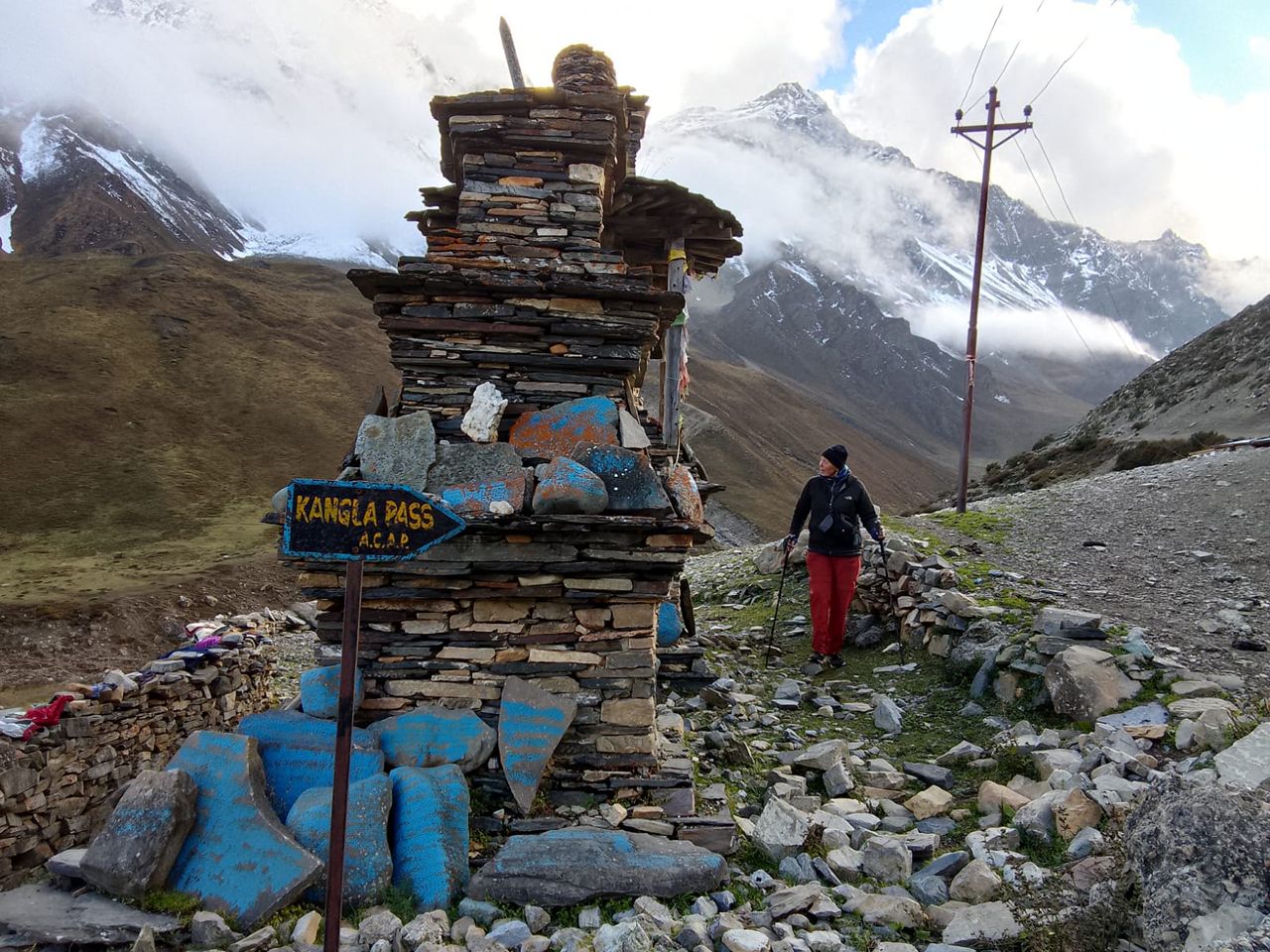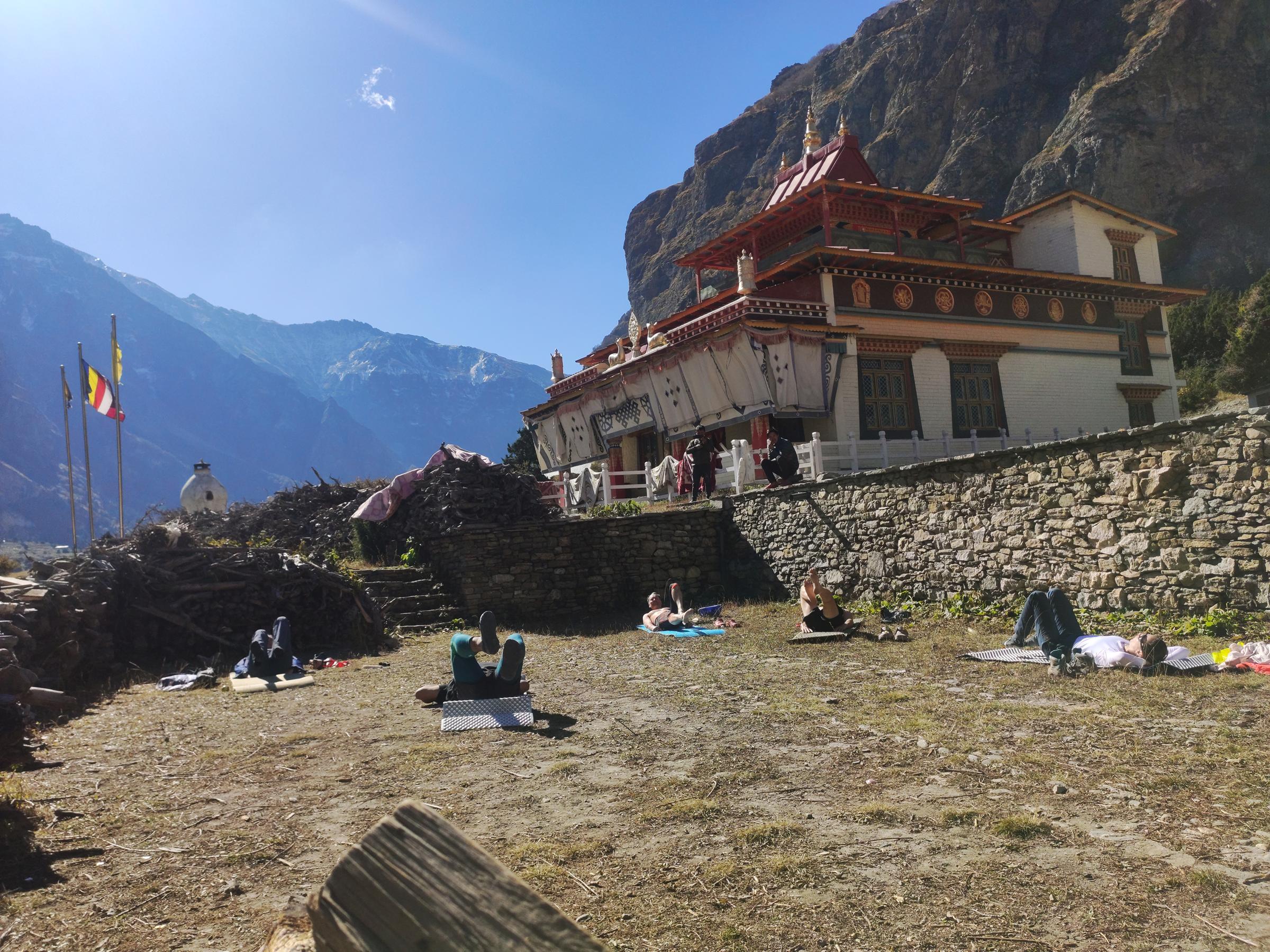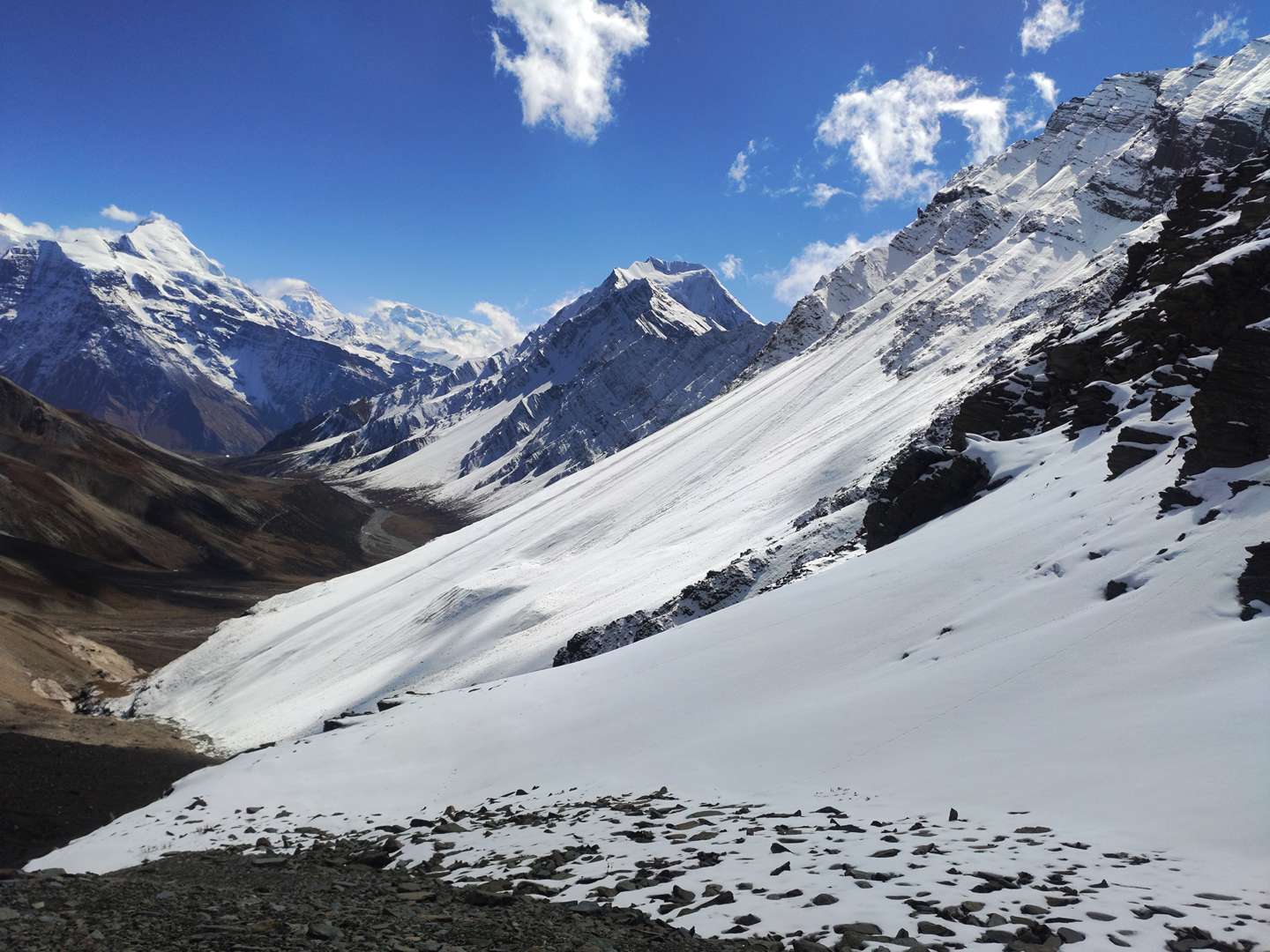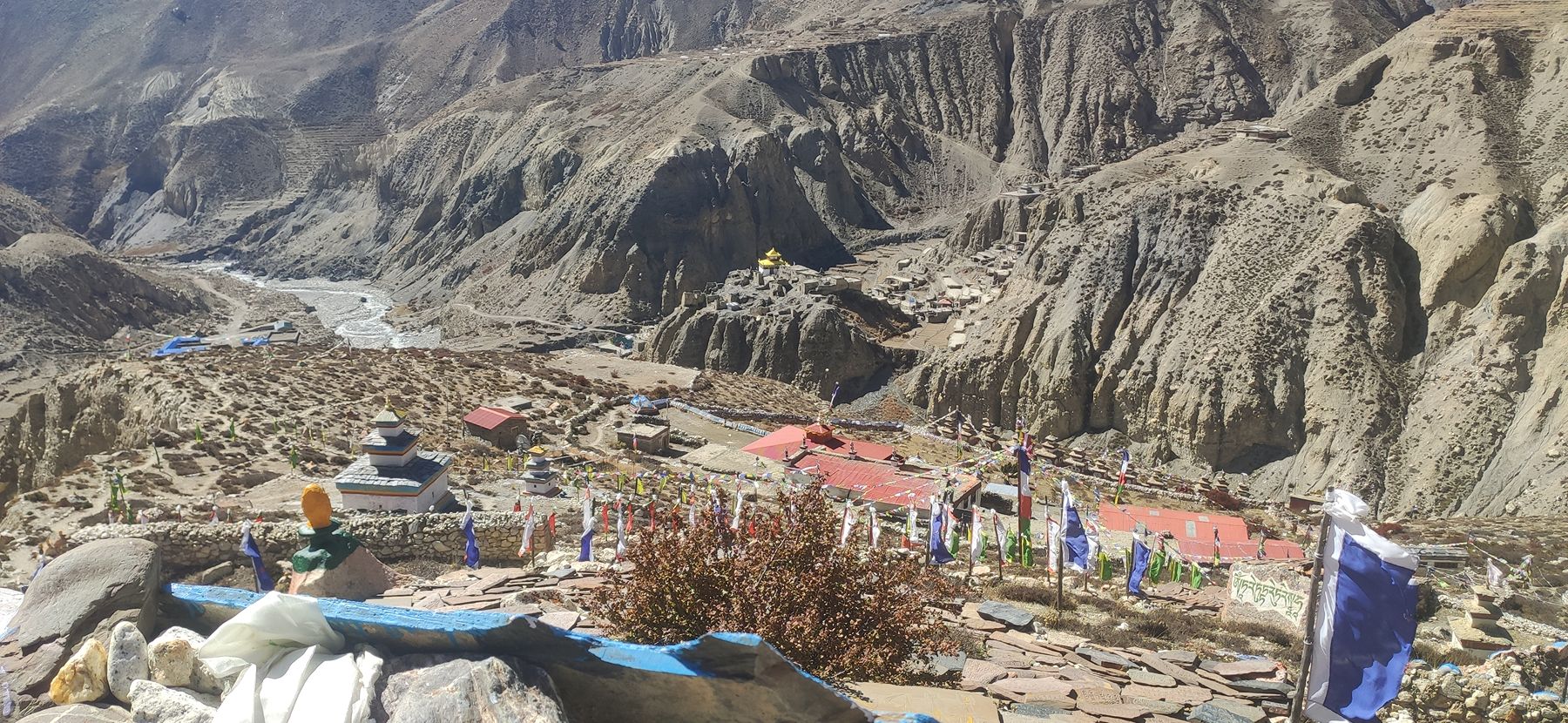Nar Phu Valley with Annapurna Circuit Trek
Detailed Itinerary: Nar Phu Valley with Annapurna Circuit Trek
Your Journey, Step by Step
Inclusions
What’s Covered in Your Adventure
- All necessary permits ( TIMS card, Annapurna Conservation Area Permit (ACAP), and Nar Phu Restricted Area Permit) for Nar Phu Valley Trek
- Experienced and licensed trekking guide(s) and porter(s)
- Accommodation during the trek (teahouse or camping)
- All meals (breakfast, lunch, and dinner) during the trek
- Transportation to and from the trekking starting/ending point
- First aid kit and medical supplies
- Trekking equipment such as sleeping bags and down jackets (if required)
- All government and local taxes
- International or National airfare to and from before reaching Kathmandu
- Travel insurance (required)
- Visa fees for Nepal
- Personal expenses such as snacks, beverages, and souvenirs
- Tips for guides and porters (recommended, but not mandatory)
- Any extra costs
Good to Know
Things to Remember
2. Accommodation on the Trek
You will find a range of comfort levels of accommodation on your Annapurna Circuit trek. On the regular Annapurna Circuit, anticipate simple but nice teahouses with twin beds, shared toilet, and simple dining rooms. More remote Nar Phu Valley has even simpler lodges with fewer amenities—a bed with blankets in a tiny room is not uncommon. Bring your own cold-rated sleeping bag, particularly for the higher elevations where the sun’s warmth is less.
You will be having comfortable stay with hot showers and cozy bedrooms in locations such as Manang, Muktinath and Pokhara. Electricity is rare in remote locations, so plug in when you can and enjoy the true mountain experience!
3. Drinking Water and Food
Your trek food is healthy, high-calorie food that sustains your trek. Dal bhat, i.e., rice, lentils and vegetable curry, can be found in all teahouses. Noodles, pastas, soups, and dumplings can also be eaten.
Prices increase with the height due to porter transport expenses, so budget accordingly. Refrain from meat dishes above Manang as refrigeration is negligible. For water, never drink directly from streams! Utilize water purification tablets, a filter bottle, or pay for boiled water at teahouses. Bottled mineral water is also available, but the plastic waste spoils this otherwise pristine environment.</p>
4. Packing List – What to Bring?
Intelligent packing is the key to a successful trek. The essentials are:
- Clothing: Pack layers you can add or remove – light top, warm middle-layers, and rain gear top. Don’t forget gloves and hat!
- Footwear: Waterproof, quality, hiking shoes (break them in first!), warm socks, and lightweight shoes for camp rest.
- Gear: Trekking poles to spare your knees, a headlamp for dark and night time, and a warm sleeping bag for chilly nights.
- Health & Safety: First aid kit, altitude sickness tablets, and sun lotion, as the sun is powerful at high altitude, and lip balm.
- Others: Power bank for your devices, energy bars for quick energy, a camera for photography, a towel for quick drying, and rain cover for your backpack.
Keep in mind, what you carry may vary based on which season you hike!
5. Altitude Sickness and Safety
This is not an easy trek since it’s high up: 5,416m for Thorong La Pass and 5,240m for Kang La Pass, so altitude sickness is a threat. Watch for headaches, nausea, dizziness, or peculiar fatigue. Keep safe by:
- Rest days at Nar and Manang to acclimatize to the thin air.
- Drink lots of water and no alcohol, it does not cure altitude sickness!
- Not a race! Trek slowly.
- Listen to your body and descend rapidly if you begin to become very sick.
6. Trek Difficulty Level
This is a demanding trek, and you must be physically sound and mentally healthy. You will be walking 6-8 hours a day for two weeks, climbing steep inclines and crossing high passes in thin air.
Annapurna Circuit part of the trek involves good roads with handy facilities, while Nar Phu Valley part comprises less isolated tracks with rugged rides and limited tea houses. Thorong La Pass (5,416m) and Kang La Pass (5,240m) require guts to go over and ample acclimatization to be able to deal with the trial. Previous high-altitude trekking experience is highly recommended. Prepare by undertaking regular cardio workouts, hill walking, and full-pack long treks in the months before your trip.
7. Trek Cost and Budget
Your Nar Phu Valley and Annapurna Circuit trek will cost $1,800-$2,500 or so, depending on your selection and how many are coming. This covers some of the higher costs: permits ($140 total), transport (jeep to Dharapani and flight to Jomsom), lodging ($5-$10/night), meals ($15-$25/day), and paid guides/porters ($25-$30/day for guides, $20-$25 for porters).
Don’t forget to add gear rental, travel insurance with evacuation, crew tips, and personal incidentals such as snacks, hot showers, and charging electronics.
8. Expandable Trekking Routes
Want to do something different? Add one of the following:
- Tilicho Lake (4,919m): Day hike from Manang to see Nepal’s highest lake – wow!
- Upper Mustang: From Jomsom, go visit Lo Manthang, an ancient traditional kingdom with unique culture.
- Annapurna Base Camp: Trek on further beyond Poon Hill for even more breathtaking views of the mountains.
9. Permits and Documents Required
As Nar Phu Valley is a restricted area, you will need these documents:
- Nar Phu Restricted Area Permit (RAP)
- Annapurna Conservation Area Permit (ACAP)
- Trekkers’ Information Management System (TIMS) Card
- Your passport and Nepal visa
10. Connectivity and Charging Facilities
You can anticipate patchy connectivity throughout your trip. The Annapurna Circuit itself is well covered in large villages like Manang and Jomsom, and most teahouses have paid Wi-Fi. But the moment you venture into the wilds of the Nar Phu Valley, be ready for days of communications blackout.
Cell phone service all but disappears, and internet does not exist in villages such as Phu and Nar. Electricity is much the same—reliable in the bigger towns but nil in the outlying villages where solar charging can come at a cost ($2-5 per device). A high-capacity power bank is the secret to keeping phones and cameras alive.
FAQs
Your Questions, Answered
2. What type of accommodation does Nar Phu Valley provide?
You’ll be sleeping in basic teahouses and guesthouses, basic rooms, shared toilets. Basic food is served but no extras – particularly in the more isolated regions!
3. Do I have to bring a sleeping bag?
Bring one for cold weather, no problem! Teahouses have blankets, but they’re never so warm that you’d want them to be, particularly when you’re up high and it’s properly cold.
4. How much colder is it higher up?
It can freeze or drop below freezing temperature, particularly overnight and when crossing passes such as Kang La and Thorong La. Wear layers so that you can add layers.
5. Is cell phone coverage and Wi-Fi present on the trail?
A few of the teahouses have Wi-Fi available for a fee but don’t count on it. Patchy mobile phone signals are the best that you can hope for and nothing in the isolated settlements like Nar and Phu.
6. Do they offer electricity to charge batteries?
Yes, teahouses do exercise power, but they may ask you a bit extra for electricity usage. The villages in the off-grid section are solar-powered, so power cuts would be the norm – carry a power bank!
7. Will ATMs be available on the trail?
No way! There aren’t any ATMs in Nar Phu Valley. The last good one is in Besisahar, so bring enough cash for your entire trip.
8. What are the permits required for this hike?
You require three: Nar Phu Valley Restricted Area Permit, Annapurna Conservation Area Permit, and TIMS card.
9. Do I have to hire a guide?
Independent hiking is not permitted in Nar Phu Valley – it’s prohibited! You will have to rent a licensed guide because it’s a closed area.
10. Do we have an issue of altitude sickness on this trek?
Yes! It’s above 5,000m with thin air. Go up slowly, hydrate well, and take rest days so your body has a chance to acclimatize.
11. Is the trek for new or experienced trekkers?
It’s for experienced trekkers, but physically fit freshers with decent training and a good guide can certainly take their chances too!
12. Do we need travel insurance for this trek?
Not a legal requirement but utterly mad to do without it! Make sure your policy includes high-altitude trekking, emergency helicopter rescue, and medical treatment.
View OurSimilar Packages
Discover our top tours, loved by thousands of travelers annually. Choose the adventure that inspires you and embark on a journey tailored to your desires.

Save 19%
Annapurna and Mardi Himal Base Camp Trek
Annapurna Base Camp and Mardi Himal Combined Trek is an excellent...
Save 29%
Annapurna Circuit Trek
One of the most famous trekking routes in the world is...
Tilicho Lake Meshokanto la Pass Trek
Tilicho Lake, the world’s highest lake located at an altitude of...
Save 17%
Tilicho Lake Trek | Manang Tilicho Trekking
Tilicho Lake, one of the world’s highest lakes located in the...





